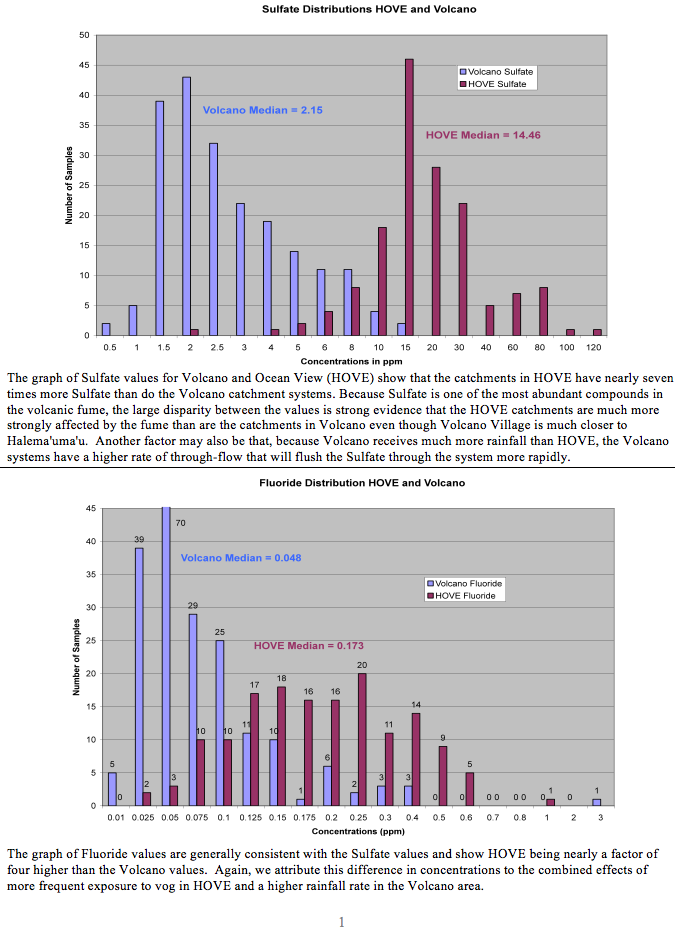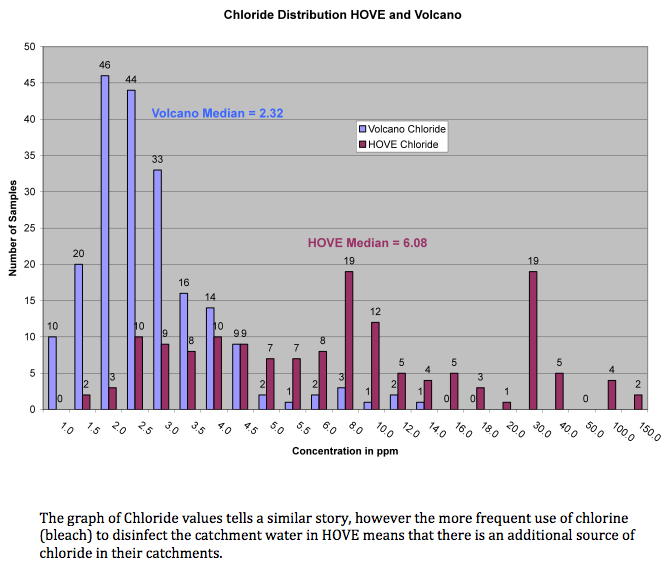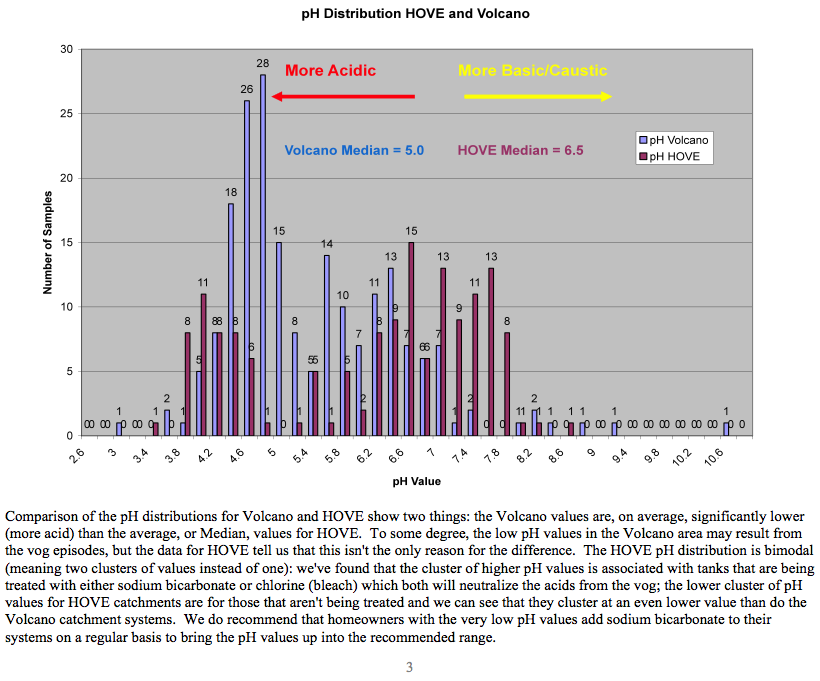


| Contaminant | MCL or Standard | Volcano Values | Median Value | Results |
| Sulfate | 250 ppm | 0.00 – 13.20 ppm* | 2.14 ppm | Below level of concern |
| Chloride | 250 ppm | 0.23 – 18.91 ppm** | 2.32 ppm | Below level of concern |
| Fluoride | 4 ppm | 0.00 – 0.33 ppm* | 0.047 ppm | Below level of concern |
*One sample was way above the range of other samples but still well below EPA standards. We did not include it so as not to skew the graphs. We are retesting that sample.
**Chloride range is large but in actuality only 4 samples went above 9.0, most were much lower.
After doing the pH testing in Ocean View and Volcano it is very clear that using baking soda or similar treatments to raise the pH is very effective and it is recommended. Besides metal leaching we suspect that the acidic water may be eroding tooth enamel but have no research to back up this theory.
Some of the catchment samples indicate that more baking soda (or similar treatment) is being added than is really needed making the pH higher than is recommended. Although there are no known health concerns with the higher pH, it may affect the taste and the physical properties (may feel "oily" or "soapy") and so we recommend that you try and keep it around 7.0 if possible. A pH of 6.5 – 8.0 is good.
We have included some comparative information between your subdivision and Ocean View Estates soon and before the end of the year we hope to have done similar studies in lower Puna to compare with your results. We'll let you know how those come out too.
If you prefer not to get more notices from us, just let us know and we'll remove you from our list. If you got this note by letter and you have e-mail, would you send us your e-mail address so we can save some time and postage costs? It would be a big help to us. Thanks.
If you would like to ask me questions about using baking soda or other treatment options, just drop me an e-mail or give my office a call: 981-5199.
Sincerely,
Trisha
Trisha Macomber, MPH ---- Cooperative Extension Service
Dr. Don Thomas ---- Center for the Study of Active Volcanoes


